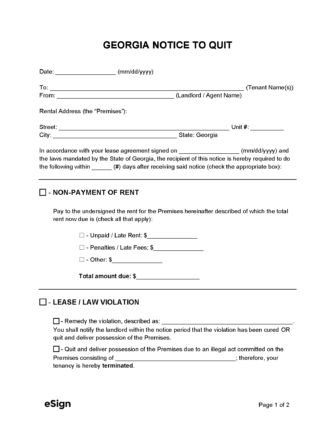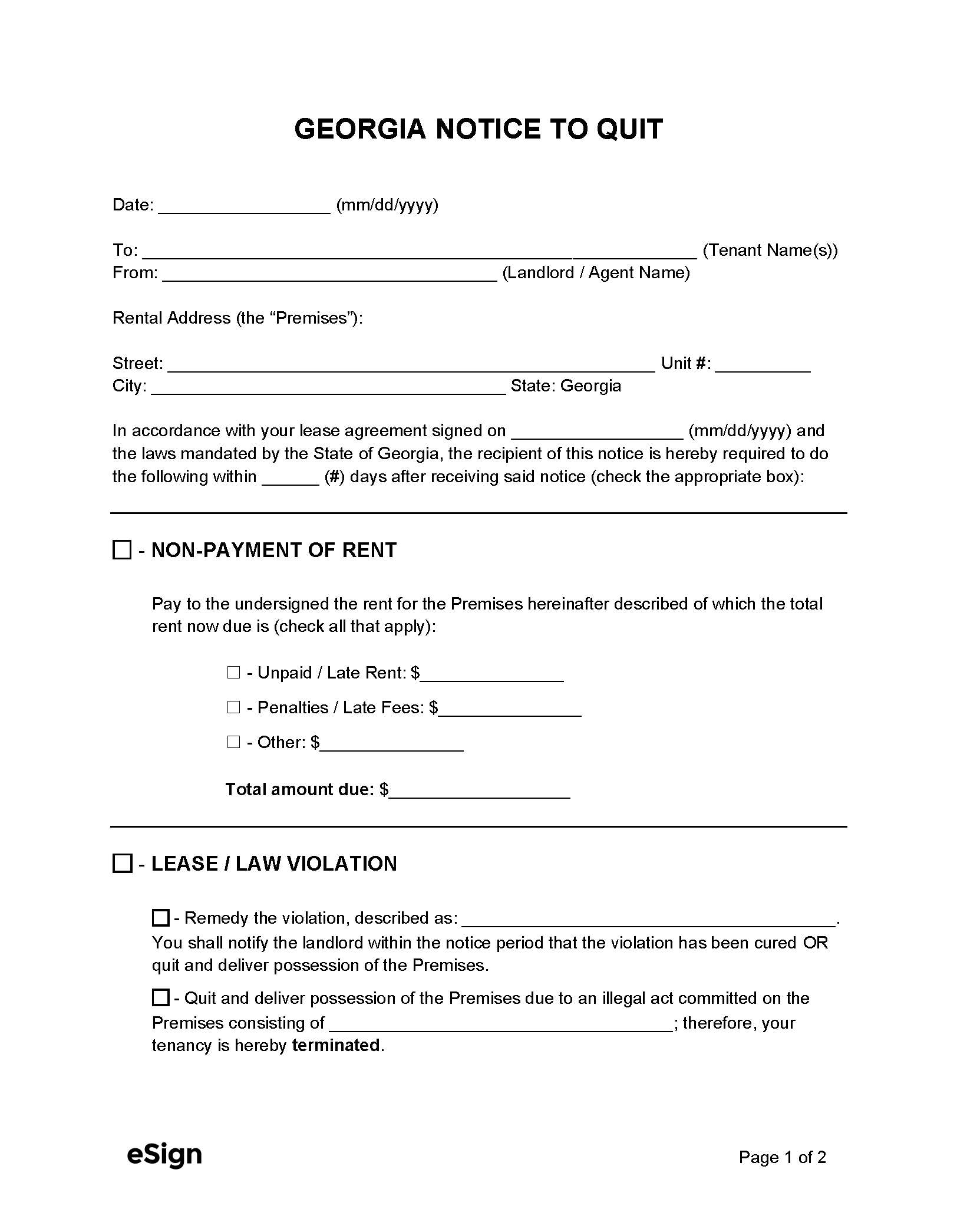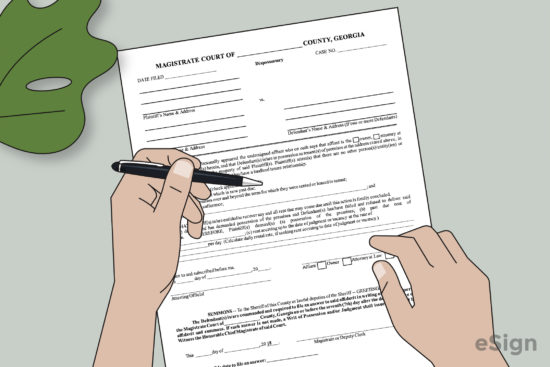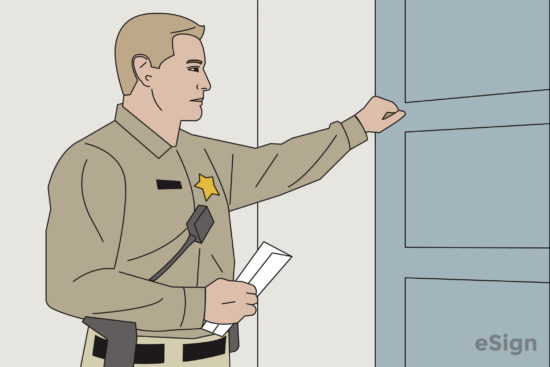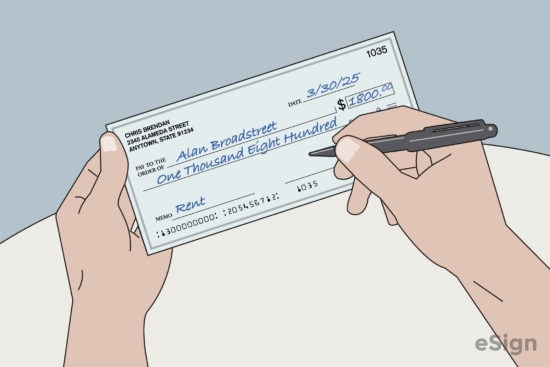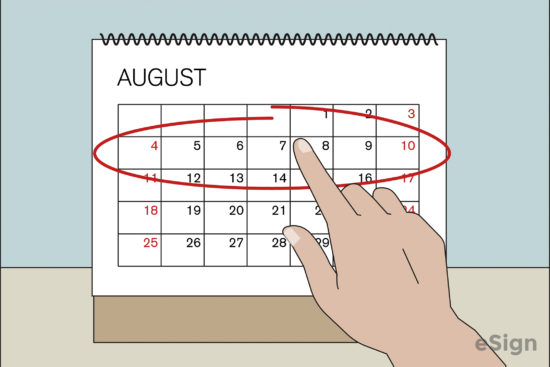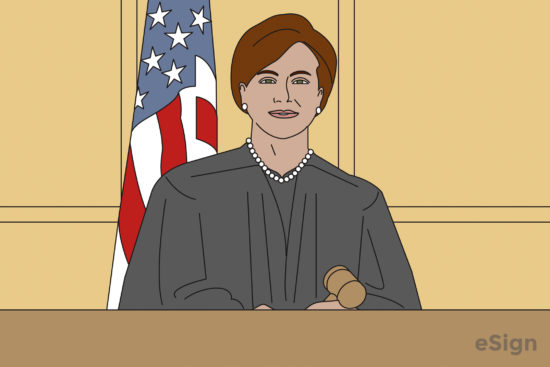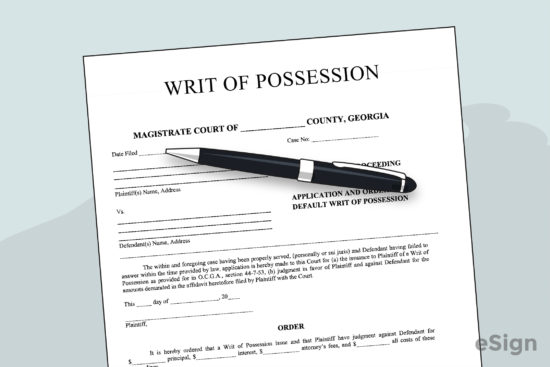Georgia eviction notices are forms used to terminate a tenancy between a landlord and a tenant. There are two notices available to a landlord; a Notice to Quit for Non-Payment and a Notice to Terminate a Month-to-Month Tenancy. The former is used when a tenant has failed to pay rent on time and must immediately vacate the premises. This notice to quit can be served as soon as rent is late, as per the lease agreement.
To terminate a month-to-month lease without cause, the landlord must serve the Notice to Terminate Tenancy, which gives the tenant sixty (60) days to leave the property. Failure on the tenant’s part to adhere to the demands of the notice to quit could result in an eviction suit (dispossessory action) being filed against them.
By Type (2)
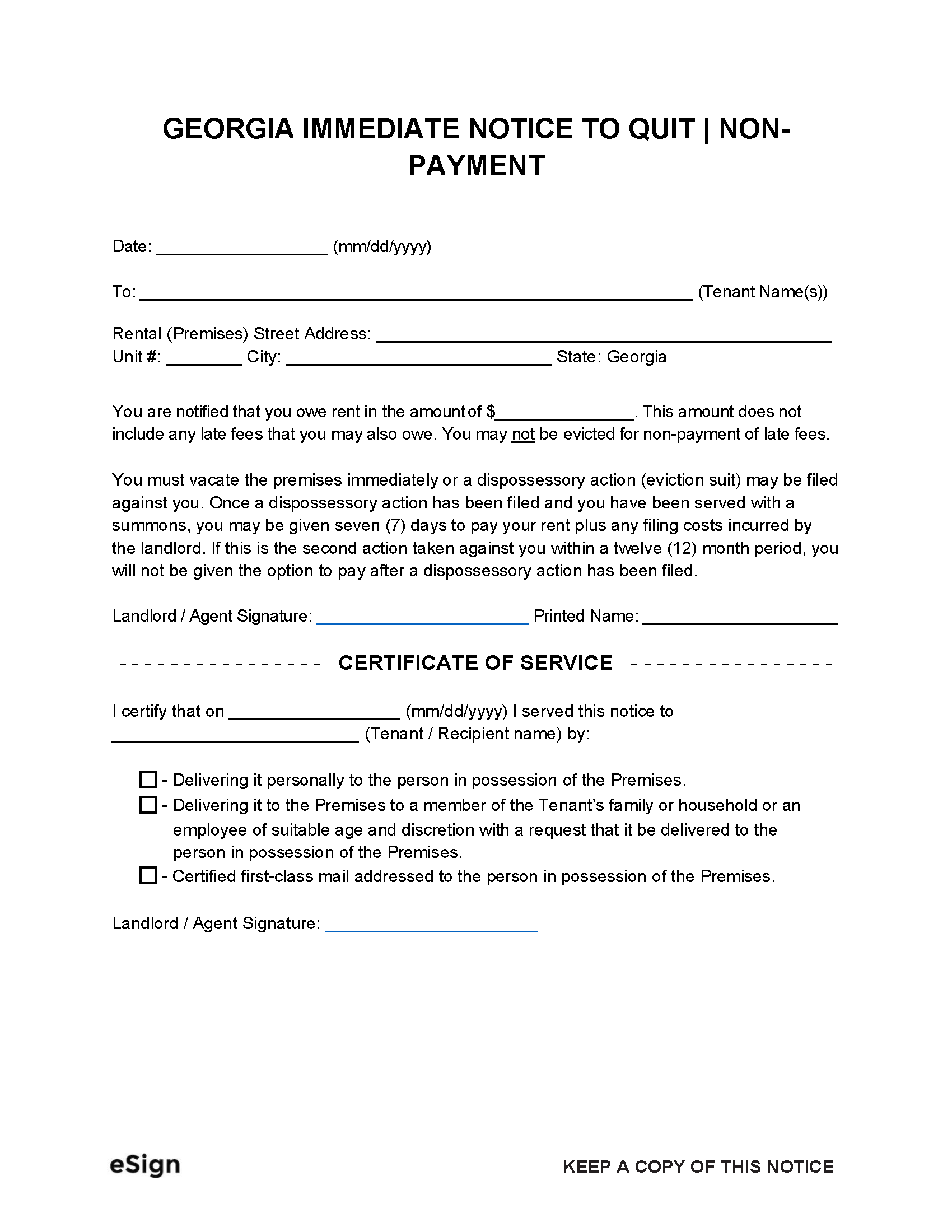 Immediate Notice to Quit for Non-Payment – Demands that the tenant vacate the premises immediately due to non-payment of rent.
Immediate Notice to Quit for Non-Payment – Demands that the tenant vacate the premises immediately due to non-payment of rent.
Download: PDF, Word (.docx), OpenDocument
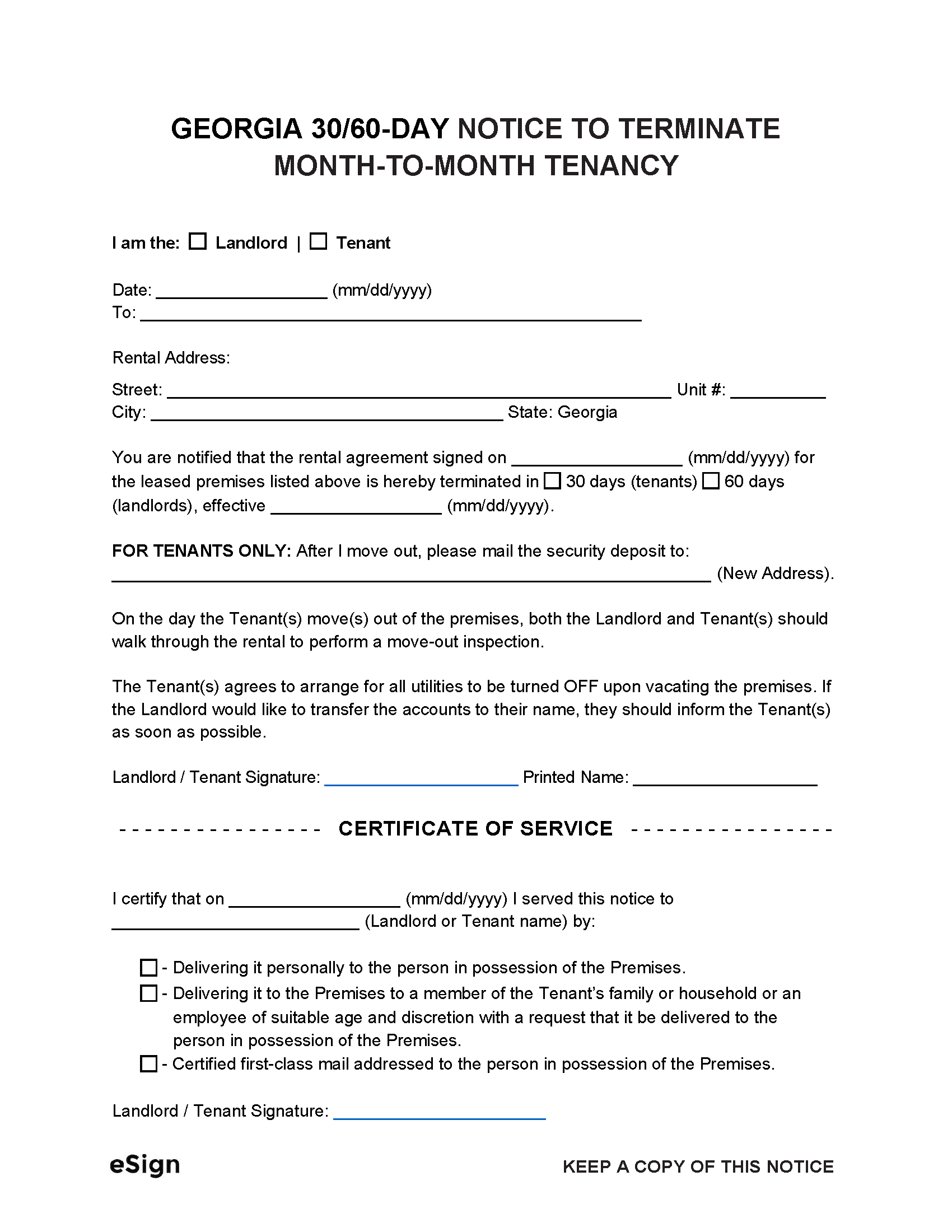
Download: PDF, Word (.docx), OpenDocument
Contents |
Eviction Laws + Required Notices
- Grace Period: Not mentioned in state statutes.
- Non-Payment of Rent (§ 44-7-50(a)): Immediate
- Lease Non-Compliance: Not mentioned in state statutes.
- Periodic Tenancy Termination (§ 44-7-7): Sixty (60) Days for Landlords; Thirty (30) Days for Tenants
- Illegal Activity: Not mentioned in state statutes.
- Intentional Damage to the Property: Not mentioned in state statutes.
How to Evict a Tenant
Step 1 – Serve Notice to Quit
Before an eviction suit, or dispossession action, can be filed against a tenant to remove them from a rented property, a notice to quit must be served. Landlords can download and complete one of the following forms:
If a tenant has been served with a notice to quit for non-payment of rent, they must vacate the premises immediately. Otherwise, a tenant is given sixty (60) days notice if the landlord is terminating the tenancy without cause.
Step 2 – Dispossession Action
If the tenant fails to leave the property in a timely manner, the landlord can demand possession by completing a Dispossessory Affidavit. This form should be filed with the magistrate court in the county where the property is located. There will be a filing fee charged to the landlord for initiating this type of action.
Step 3 – Serve Tenant
A copy of the affidavit must be delivered to the tenant after being filed with the court clerk. This can be accomplished by paying a process server or county sheriff to hand-deliver the papers to the tenant. If the server cannot hand the papers directly to the tenant, they can deliver them to a competent adult who resides in the rental unit or post it in a conspicuous place on the property. If the second option was employed, a copy must also be delivered by first-class mail to the property.
Step 4 – Tenant’s Payment (If Applicable)
If the landlord is evicting a tenant based on failure to pay rent, the tenant is given seven (7) days from the date the affidavit was received to pay back the landlord. The tenant is also legally required to pay for any costs the landlord incurred while filing the dispossessory action as well as unpaid rent. However, if another dispossessory action was previously filed against the tenant within a twelve (12) month period, the landlord may refuse payment and continue with the eviction suit.
Step 5 – Tenant’s Answer
The tenant has seven (7) days to file a Dispossessory Answer (SAMPLE – Fulton County) with the court or face a default judgment in favor of the landlord. If the tenant files an answer, a hearing date will be set so the judge can issue their decision. Failure to respond to the affidavit in a timely manner will allow the landlord to file an Application and Order for Default Writ of Possession. The tenant will be required to move out of the property without the court hearing their point of view.
Step 6 – Hearing (If Applicable)
If the tenant has filed an answer, the court will hear the case between the parties. The landlord and tenant will both be given the opportunity to make statements to the judge in order to plead their case. The judge will make a ruling after hearing the statements and verifying any evidence presented to them.
Step 7 – Judgment
Judgment in favor of the tenant will allow them to remain on the property. If the landlord wins the case, the judge will file an order demanding the tenant vacate the premises and/or make any past payments plus court fees. The landlord can also file a Writ of Possession that requires the tenant to vacate the premises within seven (7) days. If the tenant still refuses to leave the property, they will be removed from the property by a county sheriff.
Court Forms + Resources
Forms
- Dispossessory Affidavit
- Signing: Plaintiff or Plaintiff’s Attorney, Attesting Official, and Magistrate or Deputy Clerk
- Dispossessory Answer (SAMPLE – Fulton County)
- Signing: Defendant or Defendant’s Attorney and Deputy Clerk
- Application and Order for Default Writ of Possession
- Signing: Plaintiff and Judge
